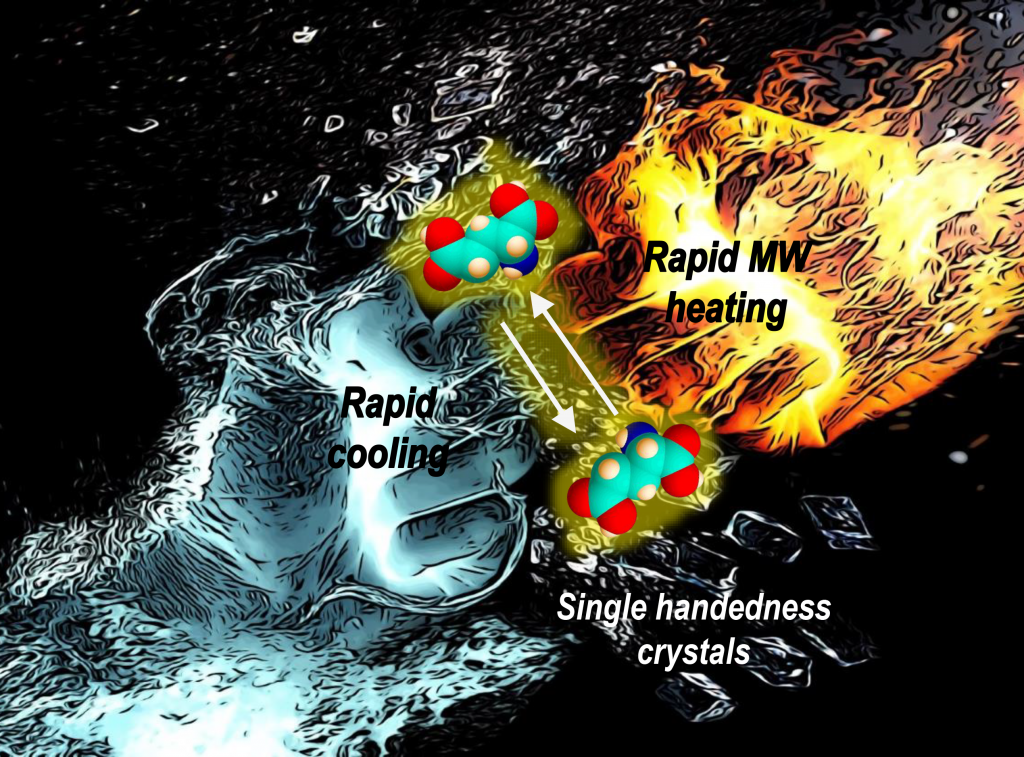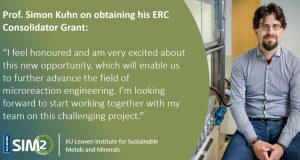Fabio Cameli recently published his work in the Journal CrystEngComm. In this work he showed that complete solid-state deracemization can be achieved via microwave-assisted temperature cycling. The combined application of rapid cooling and microwave heating could drastically reduce both process time and the impact of side reactions that lower productivity.
On top of this publication he also designed the artwork for the cover of the Journal. The graphical artwork illustrates a shivering cold frosty left and a scorching hot fiery right hand fist clashing as they meet the equilibrium reaction between the two enantiomers of glutamic acid. The ultimate result of this violent collision is the survival of a single “hand”, i.e. single chirality crystals, in what is known as a solid-state deracemization process. The cold and hot “punches” symbolize the rapid cooling and rapid microwave heating steps that were repeatedly applied in the process to effectuate rapid temperature cycling. While the concept of temperature cycling-enhanced deracemization is not new, the process was for the first time operated in such extreme conditions using an order of magnitude higher cooling/heating rates than the ones usually applied, which gave new insights into the controlling mechanisms in the process. By doing so, the transition periods of heating and cooling were eliminated and the total cycle duration was decreased substantially resulting in a considerable reduction in the overall process time. Finally, it was shown that this operating mode can also limit potential decomposition reactions due to the shorter time spent at high temperature, resulting in high solid yield and enhanced productivity of the preferred enantiomer. 




